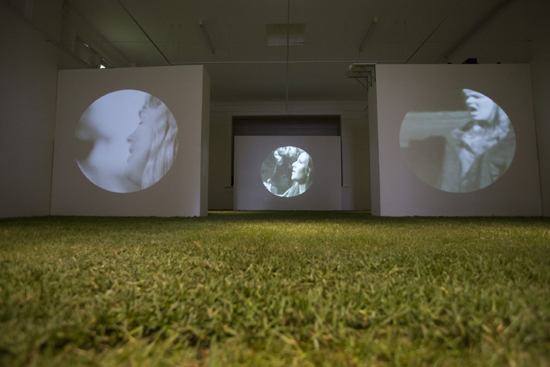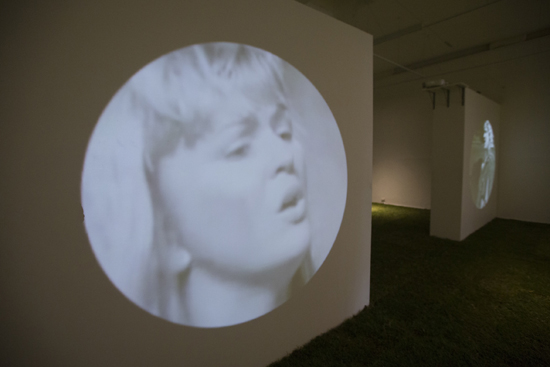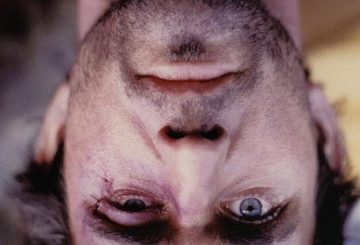Isobel Philip takes a stroll on the grass at Sian McIntyre‘s recent exhibition…
In Exile’s Lament, a video and turf installation exhibited at Kudos Gallery for a mere five days at the end of October, Siân McIntyre staged an eloquent mediation on the colonial condition, presenting a body of work that spoke to issues of displacement, settlement and the longing to return through a cohesive (and resolutely beautiful) aesthetic statement.
The gallery floor was lined with real turf (that was tended and watered daily) while its back walls became screens on which a triptych of video projections played on a loop, each featuring different footage of women performing convict songs taken from the 1969 ABC special The Restless Years. When played together the songs coalesced into a dissonant and warped melody – a polyphonic lament for a lost land.
As the viewer entered the gallery they were engulfed by the tangle of voices grieving their homeland. But in order to move into these voices (and onto the lawn) the viewer had to take off their shoes. With this simple gesture they asserted their commitment to, and investment in, the work itself. Required to experience the installation from within – to feel the grass between their toes, to listen and look but also smell – they became active agents that engaged with, and completed, its thematic logic. For at the centre of this work was a concern with the mutable boundaries between interiority and exteriority that was delicately articulated through the reoccurring circle motif: the circular frames of the projections, the ring of buffalo grass that stood out against the rest of the lawn, and the perpetual loop of the women’s mournful singing.
A circle is a spatial division that defines an interior against an exterior. When applied to a piece of land it denotes ownership and exclusion. But a circle is also about the return – the return home, the return to the beginning. In Exile’s Lament the circle was all of these things. While the medley of convict songs mourned a lost homeland – and announced the desire to return – the freshly laid turf with its miniature crop circle complicated the division between inside and outside. By lining the gallery with grass, McIntyre quite literally brought the outside in. But more than this, she asserted ownership over the gallery space. Her practice became an exercise in quasi-colonial empire building. She found a foreign landscape and laid claim to it, creating her own settlement – her own circle of ownership.
But after the installation has been dismantled and the grass had been rolled up, what’s left of McIntyre’s playful attempt at nation building? I saw the show about an hour before it closed. There were already groups of people lining up outside with shovels and wheelbarrows waiting to pick apart the turf and take it home to their own backyards. And so the colonial narrative continues as the settlement is packed up and shipped off to new frontiers and a horticultural diaspora is scattered over Sydney. Each of these new colonial outposts bears its own ‘exile’s lament.’ Displaced and uprooted, they mourn their own mother country. The convict songs continue their now silent melody.
Images: Siân McIntyre, Exile’s Lament – Installation View, 2012, Video, sound and live turf installation, photo: Catherine McElhone.




This was a really great installation. It was slightly unnerving being at the opening clusters of barefoot people sitting on the grass like they were at a picnic. When I got home I gave my feet a good scrub.
Cheers to a great artist who is capable of creating physically and beautifully, such a complex concept as land, exile and ownership are.